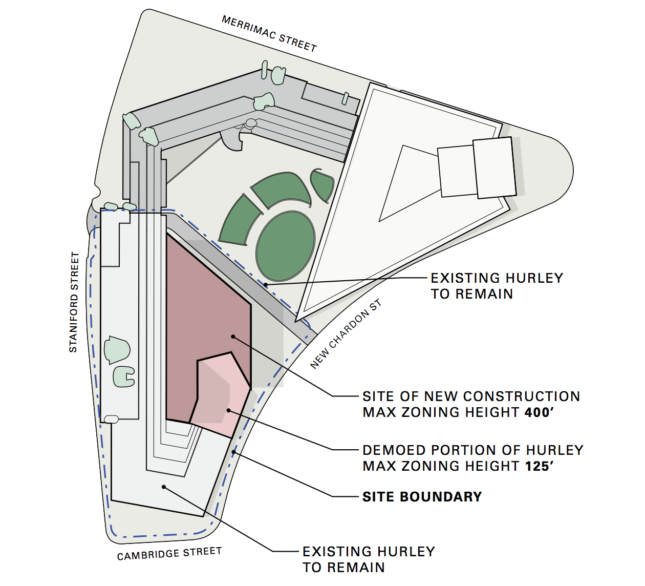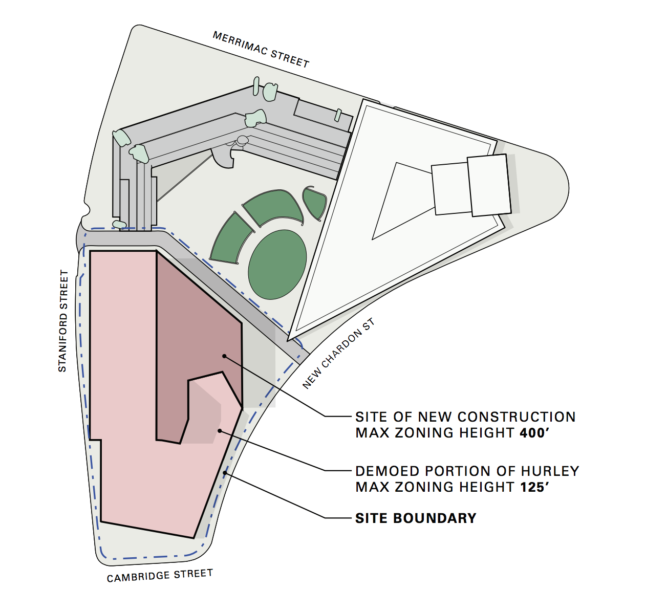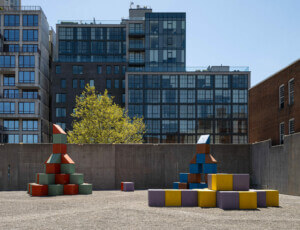The future of the Paul Rudolph-designed Boston Government Service Center (BGSC) rests in the hands of the Massachusetts Historical Commission. Last October, the state announced the redevelopment of the Charles F. Hurley Building and this week, a new report was sent to the commission detailing four options for the Brutalist structure in downtown Boston that include partial or full demolition.
Produced under the auspices of the state’s Division of Capital Asset Management and Maintenance, the document is the result of deep dive by engineers and architects into the Hurley Building and its notoriously challenging interior layout. The first option explores removing a small part of the 237,000-square-foot structure to make way for a new, high-rise construction. A pedestrian-level walkway would splice throughout the site in an effort to open up the complex to the street. Each of the other options considers demolishing half, two-thirds, and eventually the entire building for the contemporary tower, respectively, with added urban design elements thrown into the mix.

In the coming months, the Massachusetts Historical Commission will either green light or scrap these options. If one or several are seriously considered, it could help bidding developers make more informed decisions about their individual plans for the 3.25-acre site. AN previously reported that solicitations for a development partner are expected to be issued by mid-2020 and that construction slated to begin within three years. The state is also making moves to relocate the various agencies and 675 government employees within the Hurley Building ahead of future work.
Part of the allure for preservationists lies in the fact that it’s a Paul Rudolph design. Located just yards away from the 50-year-old Boston City Hall designed by Kallmann McKinnell & Knowles—which is currently undergoing a five-year-renovation, the Hurley Building and the rest of the complex further connect locals to Rudolph’s legacy of Brutalism in the city.

One group, the Paul Rudolph Heritage Foundation, believes the report didn’t fully acknowledge the fact that Rudolph designed the building from 1962 to 1966, which could hurt its case in the eyes of the historical commission. “They fully note the importance of his design guidelines for the project, and his direct work on the other [Lindemann] building—but are weaker on acknowledging the intensity of his influence on the design of the Hurley Building,” the foundation stated in a press release on its website.
This debate has been going on for quite some time and it’s unclear just how serious the state will take preservation. What is clear is that Massachusetts’ Governor Charlie Baker prefers to completely redevelop the site with little focus on adaptive reuse.











